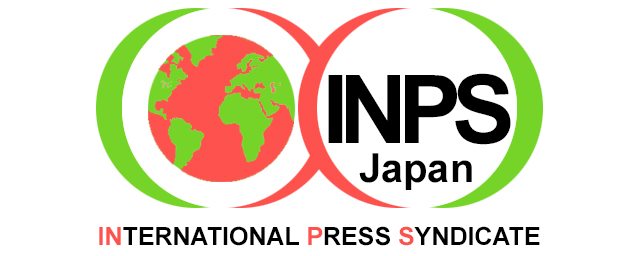By: Ranjit Devraj
Last August, the picturesque Himalayan kingdom of Bhutan halved to US$100 per night a charge levied on international tourists.
The fee recognised the “important role of the tourism sector in generating employment, earning foreign exchange and boosting overall economic growth”.
A daily charge of US$200 had been introduced in September 2022 as a “Sustainable Development Fee” to raise money for offsetting carbon generated by tourism.
However, arrivals to Bhutan did not revive as expected after COVID-19 restrictions were lifted.
Bhutan’s predicament is no different from that of most countries in the Asia Pacific region. They are torn between overtourism that brings with it environmental degradation and undertourism that deprives developing countries of the dollars needed to revive economies battered by COVID-19 lockdowns and natural disasters.
According to the UN World Tourism Organization (UNWTO), the global tourist industry was among the hardest hit by the COVID-19 pandemic, with arrivals dropping 72 per cent in 2020.
Well before the pandemic struck, Asia’s top tourist destinations were already beginning to restrict or regulate the number of visitors flocking in. In 2018, Thailand shut down Maya Bay on Phi Phi Leh Island — popularised by the movie, ‘The Beach’ — to give its delicate marine ecosystem a chance to recover from extensive degradation and coral loss.
Similarly, the Philippines’ famous Boracay island was ordered closed for six months in 2018 to address environmental concerns. Restrictions designed to protect nature and local sensibilities have also been introduced in Bali in Indonesia and Kathmandu’s Thamel district in Nepal, popular with backpackers.
But being heavily reliant on tourism revenue, these countries can ill afford to impose drastic restrictions and are in search of compromise solutions. Asia’s diversity in terms of infrastructure, income and political means that the problems engendered by mass tourism and their solutions must be tailor-made.
Affluent Japan or Singapore must follow a different path from that of Indonesia or the Philippines. Each country could begin by assessing what percentage of GDP can safely come from tourism and what are the risks of having an open door to foreign visitors as many currently do.
Bhutan’s “high-value, low-volume” tourism model, designed to plough earnings into conservation of carbon-storing forests and sustainable development through clean energy projects, helped it become South Asia’s only carbon-negative country. But Bhutan has a population density of just 20 people per square kilometre.
Compared to that, neighbouring Bangladesh houses 1,329 people per square kilometre. Both countries are vulnerable to climate change but in very different ways. Where Bhutan worries about shrinking glaciers, Bangladesh is deltaic with coasts highly vulnerable to sea-level rise.
Communities under threat
Climate change and extreme weather events threaten coastal communities across the Asia Pacific region and often directly destroy tourism infrastructure as demonstrated by the 2014 Asian Tsunami which devasted a swathe stretching from Thailand to Indonesia and Sri Lanka.
Apart from COVID-19, South-East Asia has had to cope with health emergencies such as SARS and MERS that have strained health delivery systems and forced travel bans and border closures. In turn, businesses have shut down causing job losses and economic downturns with implications that are not factored in by the global tourism industry.
COVID-19 brought home for the first time the interconnectedness of global tourism and the need for internationally-coordinated responses to health crises.
While it is not easy to quantify the number of visitors that enter or stay in a particular area, it is common experience that rents and property prices become unaffordable for local people.
Longer queues, noise, damage to historical sites, desecration of religious places, import of disease-causing microbes and agricultural pests are among the negative impacts of mass tourism. It also puts strain on resources, especially impacting food prices and availability.
Carbon emissions
Tourism accounts for roughly eight per cent of the world’s carbon emissions, linked to lodging, flights and local transport. Visitors from high-income countries are responsible for most of those emissions and as travel grows so will tourism’s environmental footprint.
A 2019 report by the UNWTO and the International Transport Forum predicts that transport-related emissions from international tourism will increase by 25 per cent by 2030 compared to 2016 levels while that of domestic tourism by 21 per cent for the same period.
Overtourism can also negatively affect the reputation of a place as a tourist destination. Few visitors relish the prospect of waiting in line to visit a monument or paying hiked-up prices for hotel rooms or homestays and paying exorbitant amounts on food.
Murmuration, which uses satellite data to monitor the environmental impact of tourism, estimates that 80 per cent of travellers flock to just ten per cent of the world’s tourism destinations. Countries need to distribute the load by developing alternate sites for tourism rather than concentrating on a few.
UNWTO forecasts say that the number of worldwide tourists, which peaked at 1.5 billion in 2019, will reach 1.8 billion by 2030 likely leading to greater pressure on already popular spots.
One way forward would be to have mutual consultations among sending and receiving countries on friendly visa regimes, vandalism prevention, ways to avoid friction between local residents and visitors, and providing support in terms of funding and know-how for conservation of nature and monuments.
New and alternative sites could be jointly developed through investments in building essential infrastructure like roads, hotels and facilities that help relieve congestion on overworked tourist spots.
There can be no one-size-fits-all solution. Instead, a range of measures can be developed, taking into account the interests of all stakeholders. In the end, tourism has many benefits that go way beyond earning dollars.
This piece was produced by SciDev.Net’s Asia & Pacific desk.
INPS Japan


